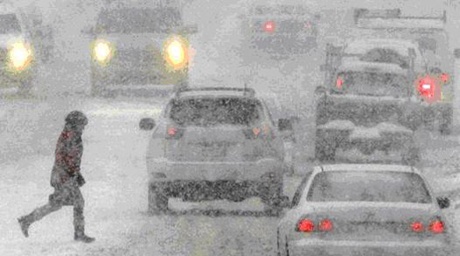Most universities in Central Asia I’ve visited since the mid-1990s are in some state of disrepair—from the curriculum and academic management to the facilities and classrooms. But there’s one where no expense has been spared—Nazarbayev University in Kazakhstan’s capital, Astana.
Postcards from Stanland: Journeys in Central Asia (Ohio University Press, 2016) is available from Amazon, Barnes & Noble, Books-a-Million and other online retailers. Read excerpts at www.davidhmould.com (Travel Blogs) or Facebook /PostcardsFromStanland/ or view readings and interviews on YouTube
I’d read about the heavy investment in construction and the contracts with leading universities in the United States, the UK, and Asia, but nothing prepared me for the view from the entrance portico. A long, wide mall, with fountains, palm trees, and carefully manicured shrubs, all enclosed under a huge atrium (palm trees don’t do too well in an Astana winter). Lining the atrium are five-story blocks, each reserved for one of the international partners. When one researcher showed pictures of the university’s interior to focus groups in Almaty, most participants thought it was a shopping mall.
Photo by Natalie Koch
Why did Kazakhstan spend millions on Nazarbayev University when facilities and conditions at other universities are lacking, when teachers have to take two or three jobs to make ends meet, when there’s no paper for the printer in the dean’s office and sometimes no chalk for the chalkboard? It’s about creating world-class education, of course, to provide the workforce for business and government. But it’s also about Kazakhstan’s image on the world stage.
Location is everything, and Nazarbayev University is the first complex you pass when you drive in on the airport road. I approached the university from the other direction on the Number 10 bus. Workers were planting flats of flowers in the newly cultivated beds. Vehicles rolled up for the start of the workday, disgorging well-dressed administrators. A luxury bus arrived with what I assumed (by their more casual dress, balding heads, and laptops) were foreign faculty, bused in from apartment complexes in the new city.
Will the investment succeed? Of course it will. The university has the president’s name on it, so anything short of success is unthinkable. But how well Nazarbayev University creates the “international education on the steppe” experience remains to be seen. Although instruction is in English, most students are from Kazakhstan so they are not exposed to students from other countries and cultures. And the moment they leave the classroom and get on the bus back into the city they’ll be speaking Kazakh and Russian again. Graduates will certainly have a competitive edge in the job market, but creating an elite group at the expense of improving general standards in higher education leaves other talented students, especially in the regions, at a disadvantage.





















